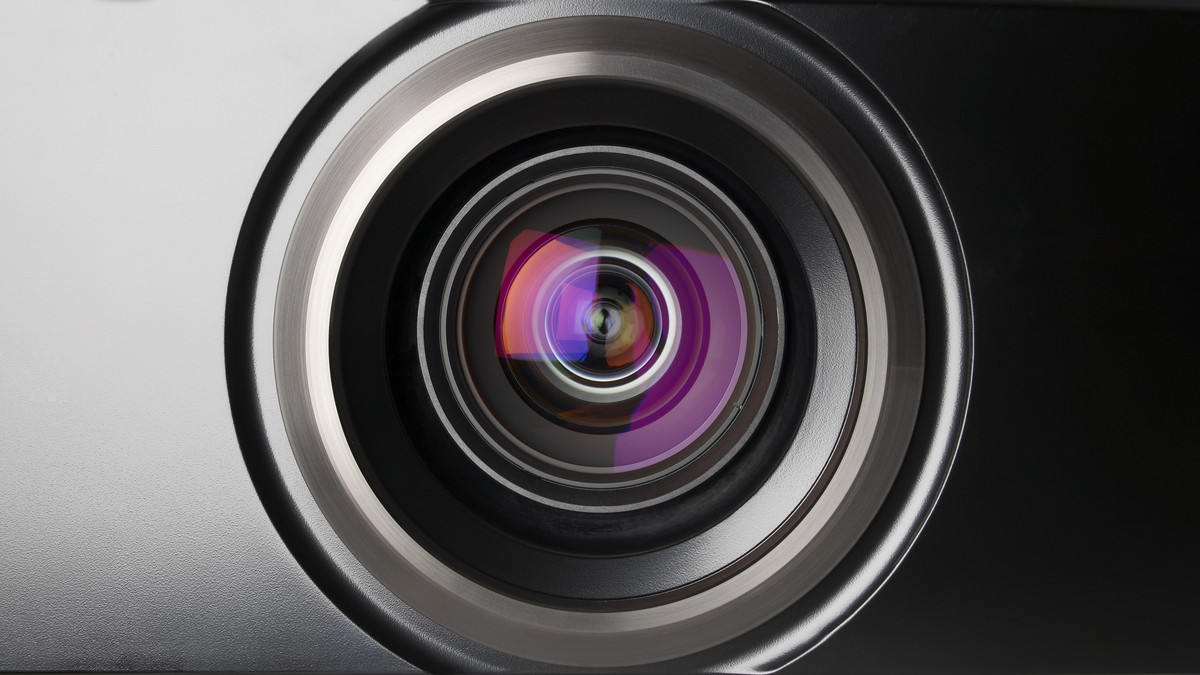Incandescent lamps are used in nearly all projectors, but lasers are becoming more popular as prices fall. Lamps are the oldest and most trusted light source in the projection world. Originating from carbon arc lamps used in movie houses, the principle technology graduated to the UHP (ultra-high pressure) model used in most modern projectors. These lamps output an abundance of green light, and that’s a good thing because green makes up the majority of RGB in video standards. When a lamp expires, it’s quick and easy to replace and the new lamp makes the projector’s image look “brand new.”
There are some downsides, however. It takes time for a lamp to heat up and show an image, plus, cooling fans make some noise as they work to prevent overheating. Over time, lamps do become progressively dimmer, and color characteristics shift over their lifespan. The red, green and blue proportions, so called “color balance” shifts with age, and eventually, the lamp will enter a “gray phase” of marginal performance where is it’s lost most of its brightness and color fidelity. It’s at this point the lamp should be replaced, but many users will motor on until the end of life.
Lasers provide some slick performance tricks countering lamp short comings. They are virtually instant on and off. They get warm, but not hot when producing light, so that fan noise is reduced. Laser color balance is stable with use and the range of colors called “color volume” can be greater than lamp sources. There is no loss of light with use.
The downside is that laser is new technology in home theater and this means a laser projector will cost more to purchase than a lamp base model. While there is normally a single lamp in projectors, lasers have many individual laser “lightbulbs.” There can be as many as 24 and often 48 individual “bulbs” for output. Affordable laser projectors use blue lasers and a mechanical phosphor wheel to make necessary colors, while very high-end laser models use sets of red, green and blue laser diodes which can be very expensive. In both cases, if one diode should fail, it is usually not noticeable.
In sum, the laser technology has several positive benefits, and prices on this technology will decrease as the technology proliferates.
Lamp Pros
- Lamp based projectors are less costly to purchase initially
- Replacing the lamp makes the image quality “brand new”
- Lamps are the oldest, most used and trusted light source
- UHP lamps output mostly green light (HD is about 70% green)
- Easy to replace
- Easy to carry a spare
- Replacement lamps easy to source
Lamp Cons
- They take time to turn on
- Lamps run relatively hot
- They is usually a cool down period
- Cooling fans generate noise
- Lamps degrade over time
- Lamps can be fragile
Laser Pros
- Laser projectors for home theater are safe to use
- Power up time is short compared to lamp
- Turn off time is instantaneous
- Laser runs warm not hot
- Fan cooling noise is less
- Laser can produce larger color space
- A laser light source is composed of a number of laser diodes
Laser Cons
- More costly to purchase projector initially
- Red, green and blue laser expensive to employ
- Mechanical part (Phosphorus wheel)
- Complete laser replacement not practical
![]()



